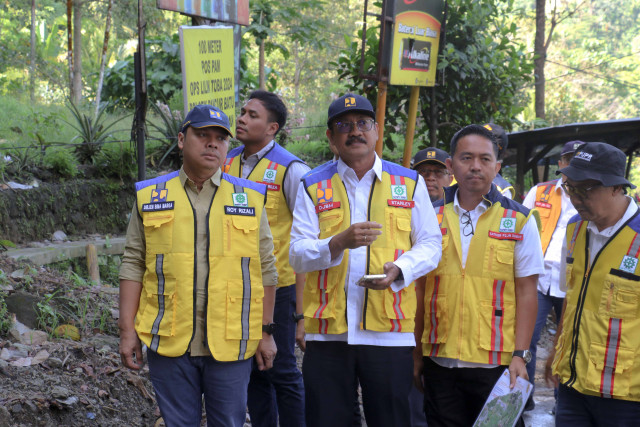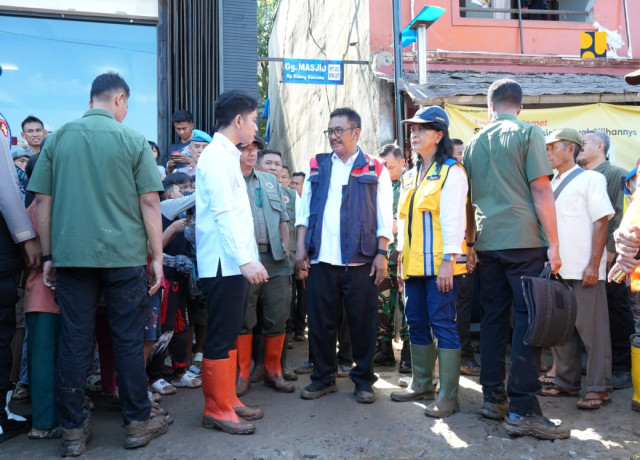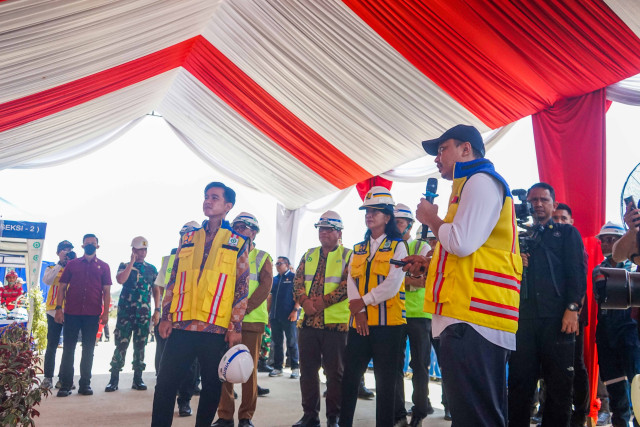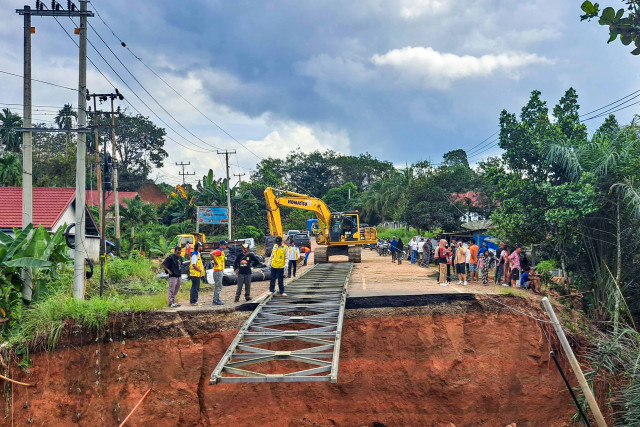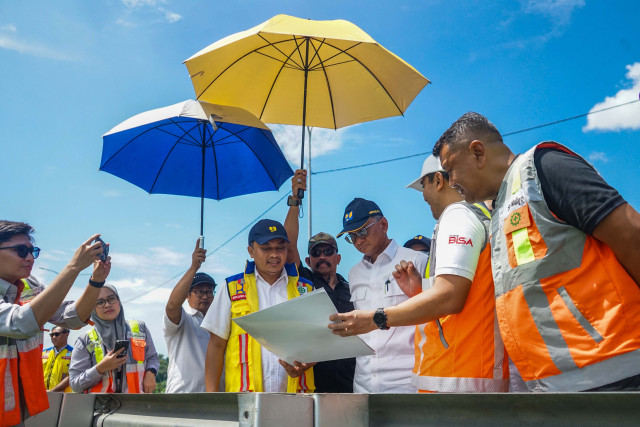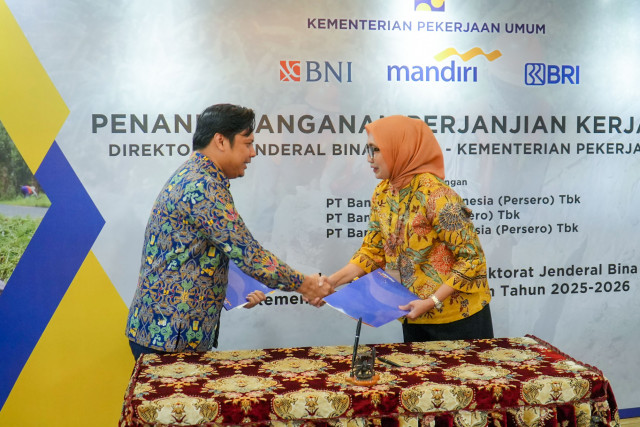The Ministry of PUPR Builds a Hanging Bridge as the Spearhead of Inter-Village Connectivity Across Indonesia
- 19 Okt 2018
- News/General
- 488 viewed

Jakarta - The Ministry of Public Works and Public Housing (PUPR) continues to complete the construction of a suspension bridge that was built as the spearhead of the connectivity of every village in all regions in Indonesia. This is also one of the breakthroughs in increasing access to inter-village liaison, while at the same time providing impetus to economic development in rural areas.
The construction of a suspension bridge is one of President Jokowi's third Nawacita implementations, namely building Indonesia from the periphery by strengthening regions and villages within the framework of a unitary state. So that, later it will strengthen rural areas and remote areas separated by natural conditions such as rivers, slopes, hills, or ravines.
PUPR Minister Basuki Hadimuljono said the presence of a suspension bridge was needed and his presence was welcomed by the community because the benefits were real. "It is certain that the material used in the construction of the suspension bridge is domestic production material," said Minister Basuki some time ago.
Director General of Highways, Sugiyartanto said the presence of the construction of a suspension bridge in addition to being beneficial in terms of connectivity in each rural area of a village, would also cut the travel time of people who are active.
"In the future, residents in a village do not need to rotate far enough to cross between regions they want to go to. So that we understand the needs of the village community," Sugiyartanto said when holding a Hanging Bridge Development Discussion with media partners, at the Ministry of PUPR, Tuesday, (10/17/18).
Sugiyartanto added the increasing need for the construction of a suspension bridge that had great benefits to the village community, many stakeholders such as the Ministry / Lembagai and NGOs who participated in supporting the Ministry of Public Works and Housing to build in other areas that were not yet reached by the suspension bridge. "This also provides easy access to public facilities needed such as access to health centers, schools and places of worship. We continue to increase the value of connectivity, accessibility, as well as mobility between regions," he added.

In 2018, the Ministry of Public Works and Housing through the Directorate General of Highways conducted construction of 134 suspension bridges with a length of 42 m - 120 m, spread across Aceh Province 3 units, West Sumatra 6 units, South Sumatra 2 units, North Sumatra 7 units, Banten 30 units, Central Java 9 units, East Java 12 units, West Java 23 units, DIY 3 units, East Nusa Tenggara 4 units, Riau 2 units, Jambi 4 units.
Then in the province of Central Kalimantan as many as 4 units, East Kalimantan 1 unit, West Kalimantan 4 units, Southeast Sulawesi 2 units, North Sulawesi 4 units, Central Sulawesi 2 units, South Sulawesi 8 units, and Papua 4 units. It is targeted that 50 units will be completed in November 2018, while 84 others will be in December 2018. The budget for the construction of 134 suspension bridges in 2018 is Rp 770.5 billion.
In 2015, the Ministry of Public Works and Housing had built as many as 10 suspension bridges, in 2016 there were 7 suspension bridges, and in 2017 13 suspension bridges were built, each spread in several regions throughout Indonesia. In 2019, the Ministry of PUPR plans to build 200 suspension bridges with a budget of Rp. 833 billion.
The construction of a suspension bridge is implemented by using a mature design, starting from the selection of materials and the application of quality technology. The use of suspension bridges such as steel, cables and bolts also uses domestic local products made in Indonesia.
(Bureau of Public Communication)







